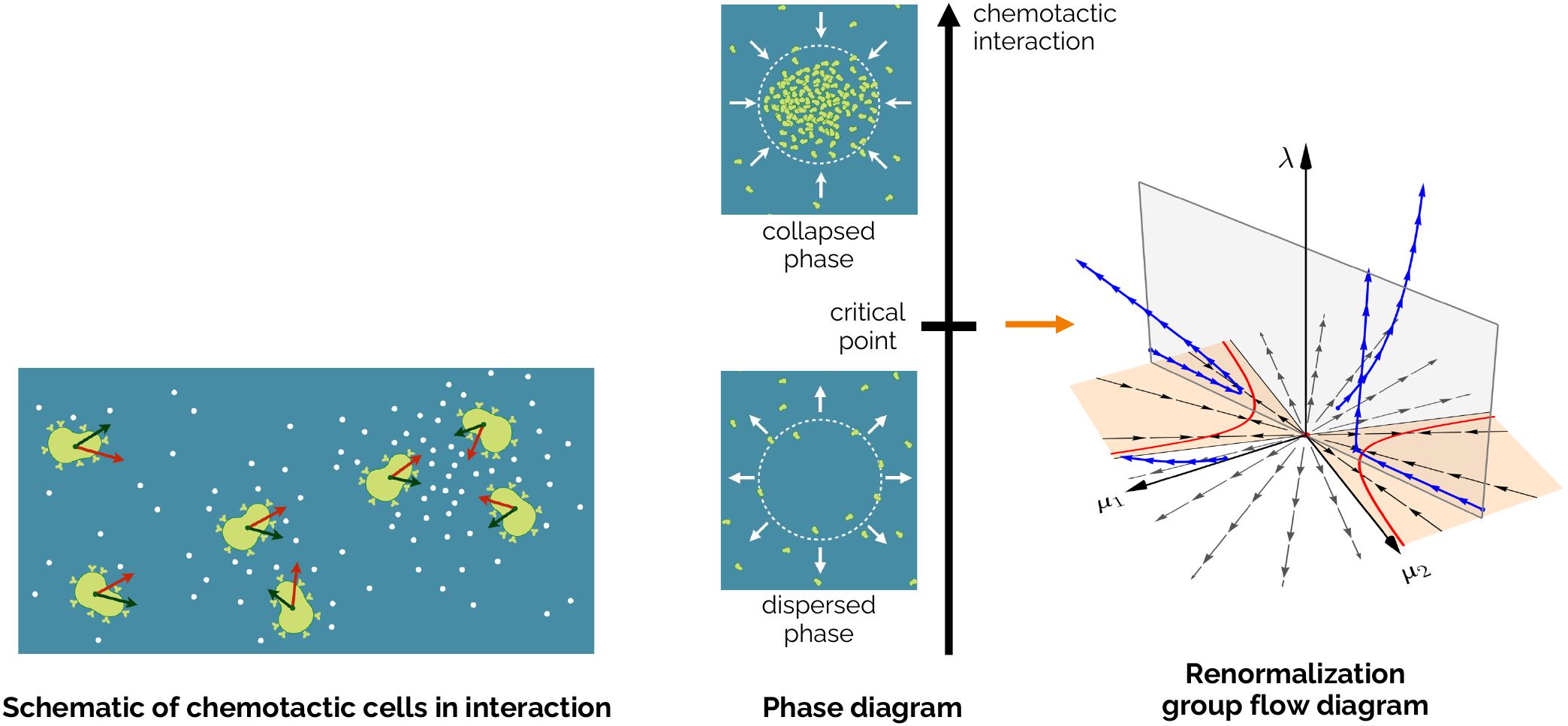Nonequilibrium statistical physics
Chemotaxis and proliferation

Understanding the self-organization of living systems is one of the biggest conceptual challenges of the present century. A generic mechanism that drives such organization is interaction among the individual elements — which may represent cells, bacteria, or even enzymes — via chemical signals. The ability of an individual cell to follow a gradient of chemicals is called chemotaxis.
The interplay between cellular growth and cell-cell signaling is essential for the aggregation and proliferation of bacterial colonies, as well as for the self-organization of cell tissues.
For this project, I am looking for motivated students!
The goal is to consider microscopic and coarse-grained models for assemblies of chemotactic cells that produce their own chemical field, leading to effective long-range interactions between them. To characterize the nonlinear pattern formation stemming from the interplay between cell proliferation and cell-cell chemotactic signaling, several approaches could be considered:
- a numerical approach, based on simulations of the microscopic equations of motions or on solving the coarse-grained partial differential equations,
- a field-theoretical approach, that will allow characterizing the critical points and scaling properties of such colonies.
Contact me if you are interested!
